How To Create A Portfolio For An Interview
I recently read some bad advice from a supposed career expert. The job seeker was asking whether or not he should prepare interview materials other than some clean copies of his resume.
The answer went like this:
"Well, some industries are known for preparing presentations or portfolios of their work or examples of previous projects, but it's not for everyone. Mostly for people in sales or marketing. You probably don't need one."
My jaw hit the ground. I couldn't believe I was actually reading an exchange in which an expert was telling someone not to go the extra mile—telling him to not to do something that would help him stand out.
And if there's one thing all recruiters agree on, it's that you need to take every opportunity to stand out among all the other talented candidates. While there are lots of different ways to do that, one way I've discovered works wonders is to put together an interview portfolio. No matter what industry you're in or job title you're after, it almost always impresses.
An Interview Portfolio Is What Exactly?
An interview portfolio consists of six main parts: an introduction, a professional background summary, STAR behavioral examples, awards and recommendations, sample solution(s), and a closing page. While the content will be similar to what's on your resume, the portfolio takes it a step further to "show and tell" your skills with specific examples. Your goal is to get the hiring manager to visualize you solving problems for him.
And I Should Have One Because…
Creating an interview portfolio does three things for you that can skyrocket you past other candidates. First, it shows that you're serious, that you do your homework before an interview, and that you don't take the process lightly. You're in it to win it. That goes a long way with both HR recruiters and hiring managers because they want to not only see that you want a job, but also that you want this job. The portfolio demonstrates enthusiasm for the position. Because employee turnover's costly, the powers that be want to get it right the first time—meeting with someone who is obviously excited for the opportunity can make all the difference.
Along with demonstrating your enthusiasm, a portfolio prepares you for the interview better than any other method out there. Here's the thing: To a recruiter, it looks like a wonderful showcase of your skills and accomplishments, but for you—it's a cheat sheet! Getting nervous and forgetting to say something impressive, or worse, saying something that doesn't sound as good out loud as it did in your head is normal. Taking time to write out some examples of your brilliance ahead of time will aid you in having a successful interview.
On top of all that, this physical packet serves as a tangible reminder of your talents. You're giving yourself an edge because now the hiring manager can quickly reference your skills and accomplishments.
Does This Really Work?
Yes, but don't just take it from me. There are many people who have been doing this type of preparation for years.
Take Kelly Stamerra, a senior hospital pharmaceutical sales representative, for example, who says, "It started out as just a way to look and sound more credible when I was just starting out, but after a while I realized not only was it keeping me on track, but it directed the conversation. I felt so comfortable discussing the information I had put in there because I had taken the time to think about it, so I never went down a rabbit hole."
The result?
"I call it my lucky presentation," Stamerra explains. "Hands down I would not have gotten the jobs I did without it. As I continued to apply for promotional positions, it made me sound polished and professional and I quickly moved into specialty positions. It is my security blanket. Honestly, I would feel naked going into an interview without it!"
OK, You've Convinced Me. What Next?
A key element to your portfolio is that it should be visually engaging. Think infographic-like in appearance. It should be an easy-to-skim, impressive outline of your accomplishments. The easiest way to create an interview portfolio is to create it in PowerPoint—but more on that later. For now, let's talk a little bit about each section.
1. Introduction: Two to Three Pages
The introduction consists of an engaging cover and a theme page where you describe in one or two sentences what makes you awesome (a.k.a., your personal brand) and a top skills page. I always have fun with the cover since it's your first impression. Here's one of my favorites, along with some personal branding pages:
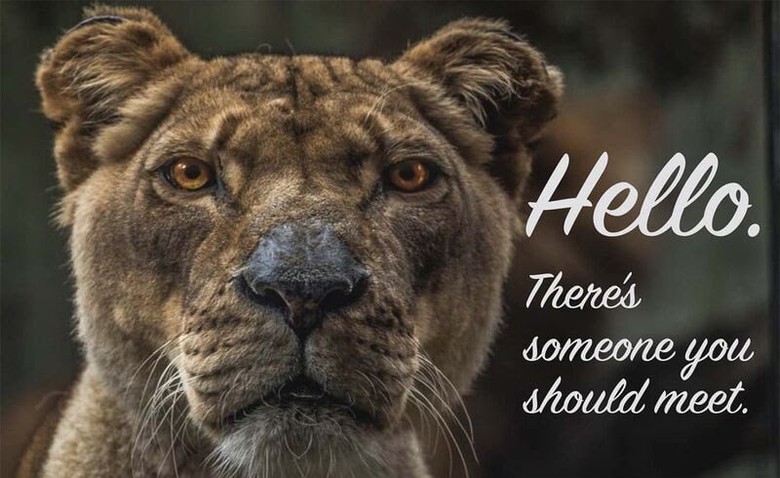
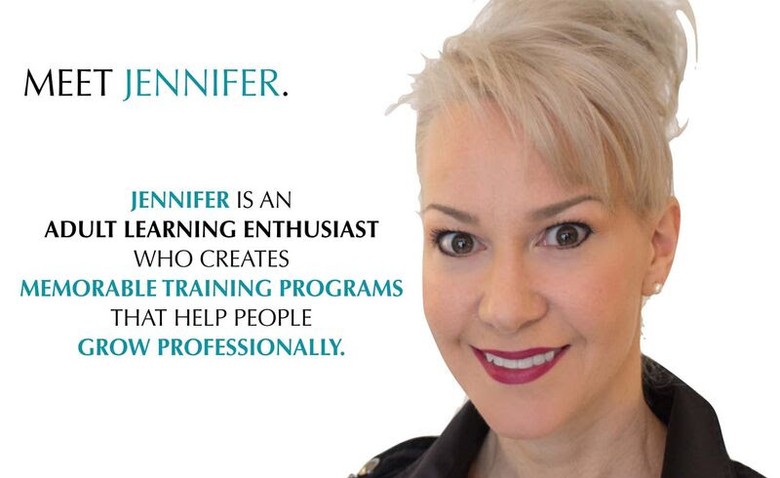
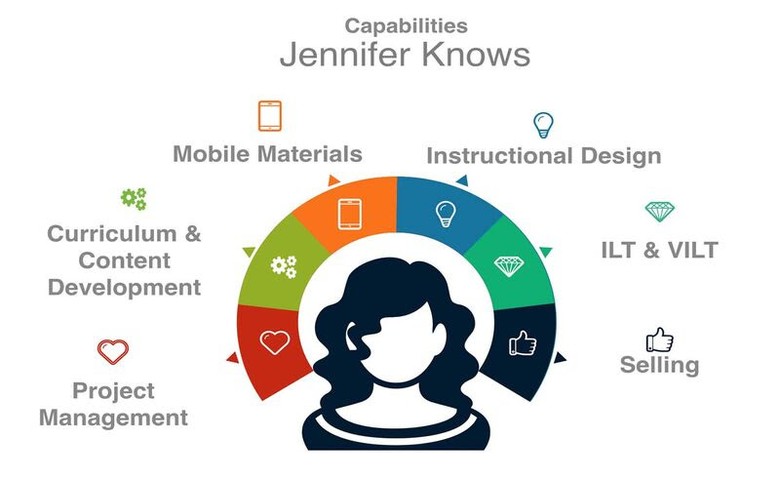
2. Professional Background: 2-4 pages
This section consists of an At-A-Glance section of your cumulative knowledge, a visual timeline of your career path, your education, and any certifications you have. If you have created an infographic resume summary, use the same information in these sections. If you don't have enough cumulative information yet for each section, just focus on your education and career path by combining the two into one timeline. Featured below are some examples from a professional in the social and public policy sector:
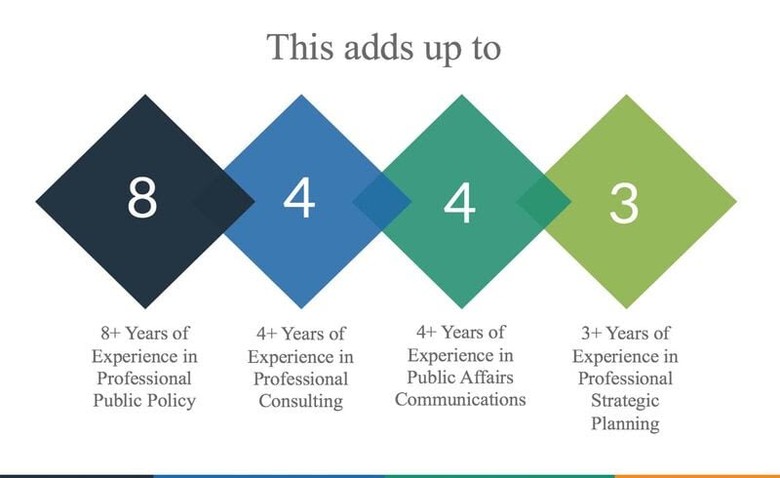
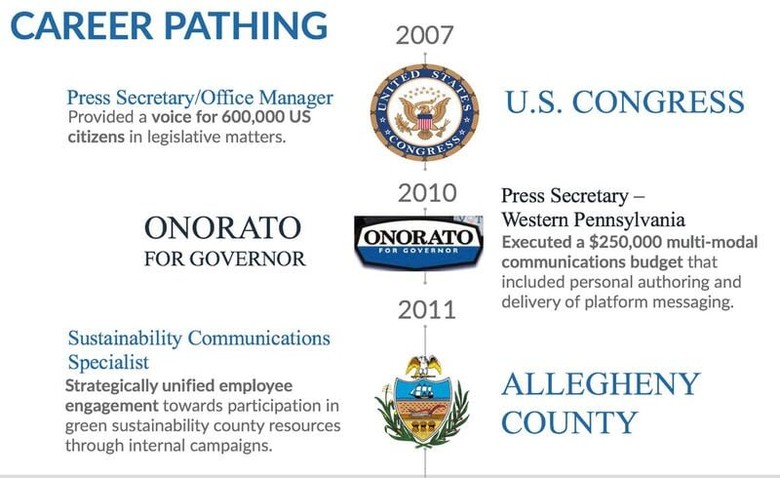
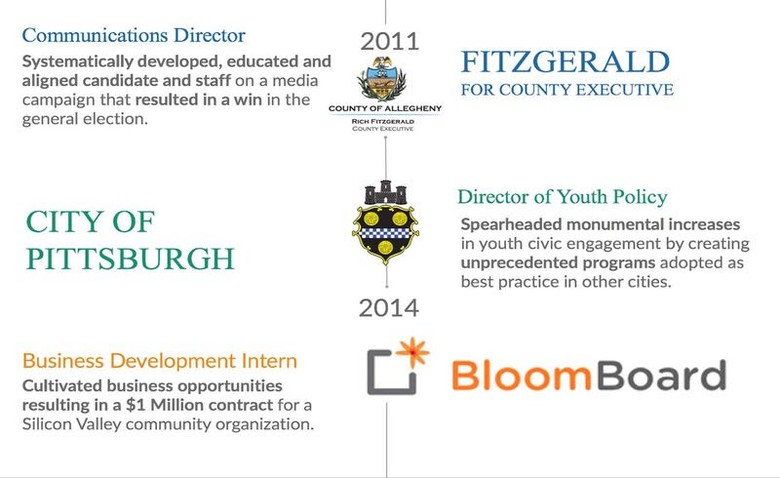
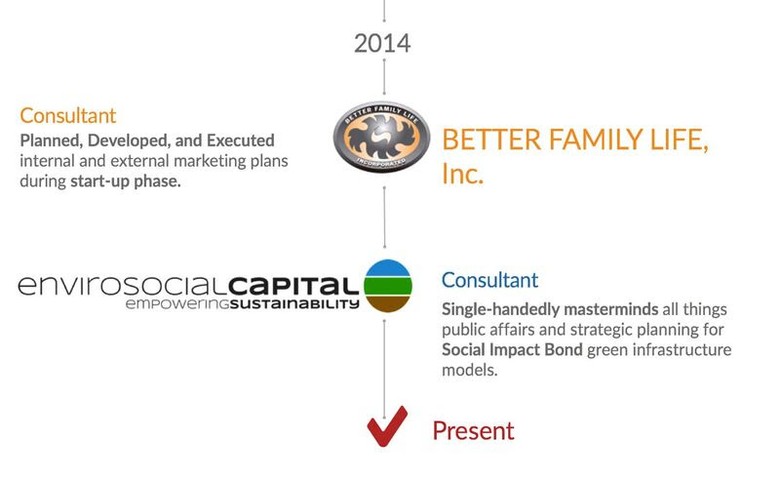
3. STAR Behavioral Examples: Two to Three Pages
During your interview, you'll most likely be asked a behavioral interview question at some point. It will sound something like this, "Tell me about a time when you had to step up and lead your team, even though you had no direct authority." The best way to think about answering these questions is to use the STAR format: describe the situation, outline the task you identified, tell what action you took, and then describe the result. It's an easy way to stay on track and not go off into a ramble because you're nervous. We've all witnessed or even experienced the question that ends with, "I'm sorry—I can't remember the question," after five straight minutes of babble.
For your portfolio, think of at least three different examples of situations that not only show off your top skills, but that also fall into a soft-skills category such as leadership or teamwork. Use one page for each example and write one or two sentences for each step of STAR. During your interview you can verbally expand on each, but for the portfolio keep it short and simple.
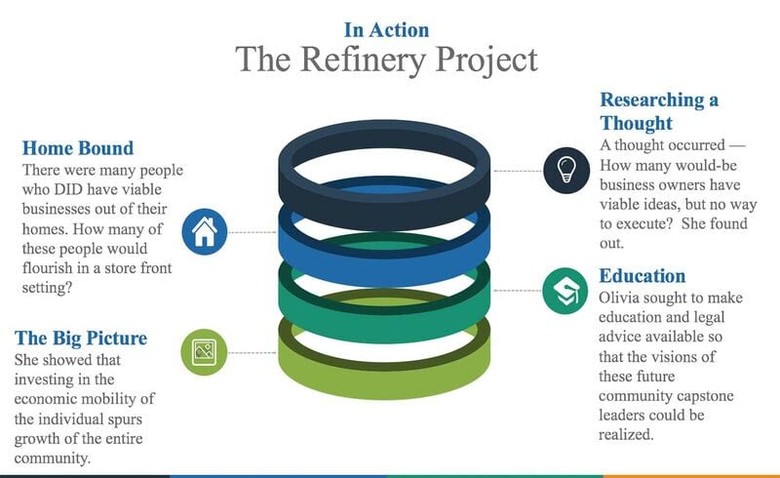
4. Awards and Recommendations: One to Two Pages
Always include some third party reference of your skills, whether it's an award you won, a few quotes from a recent performance review, or even a few examples from your LinkedIn recommendations.
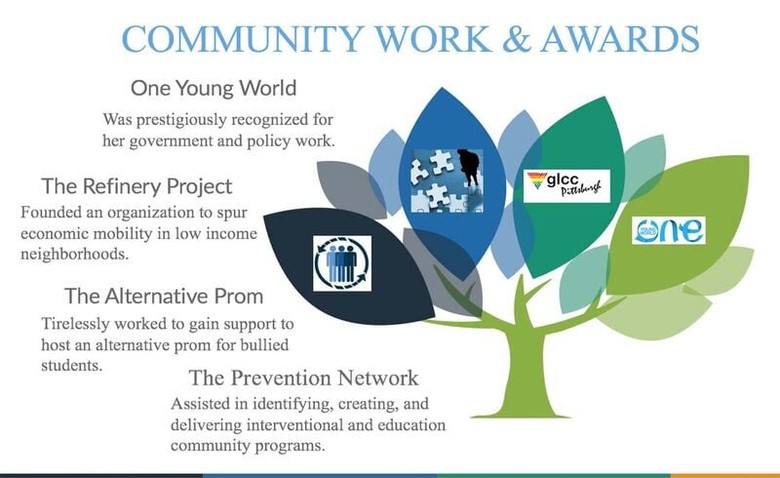
5. Sample Solution(s): One to Two Pages
Many people refer to this as a 30/60/90 in which you outline what you'll do if you get the job in the first 30, 60, and 90 days. But the problem with that is that it always sounds generic. A better way to do this is to identify a specific problem that is either common to the industry you're in, or one that you uncovered in your company research prior to your interview.
Your goal here is to get the recruiter to visualize you solving a problem for him now. Lengthy onboarding time's a luxury most managers can't afford, and if you can show how you can start contributing to the team immediately—you'll have his undivided attention. Use the STAR format like you did in the previous section to keep it simple. Below is an example from a professional in the communications industry who details a common project management problem and solution.
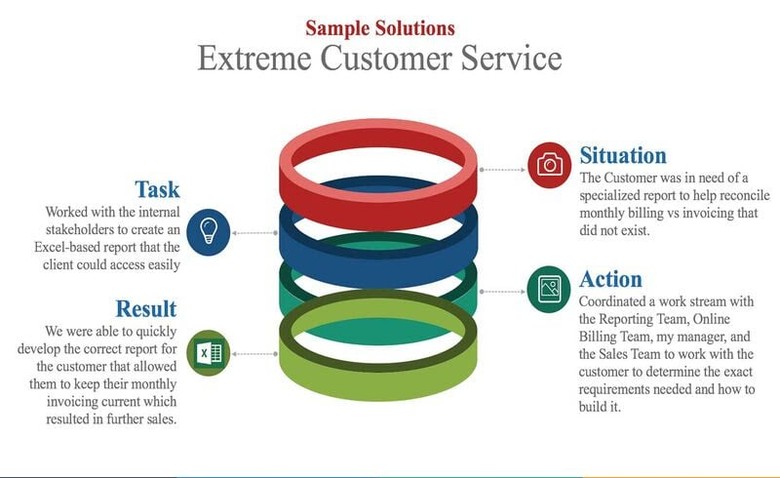
6. Close: Two pages
In this section you'll reiterate in two to three sentences your theme, along with any overarching problems that you can solve right now. You can either insert a page with all your contact information, or insert your traditional resume.
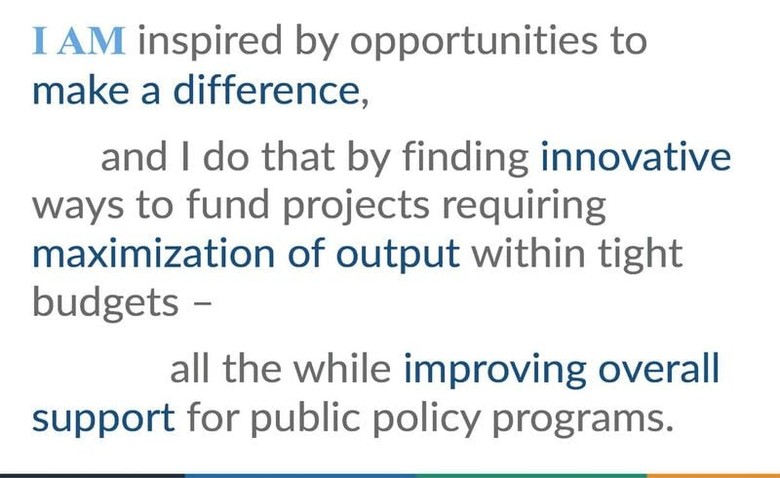
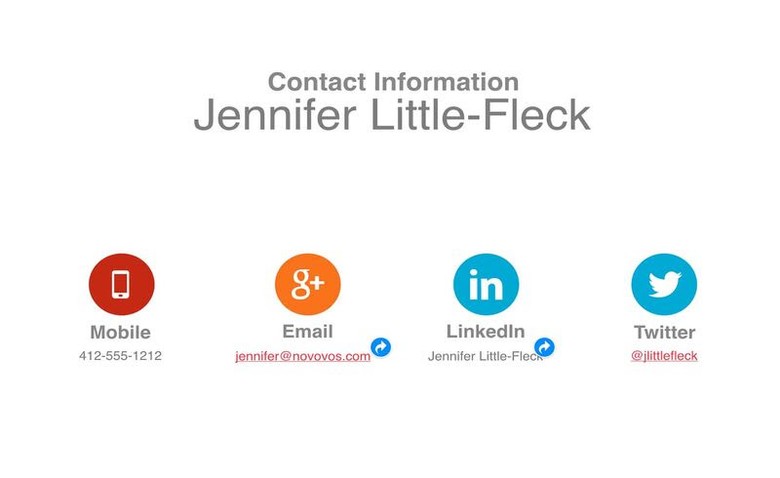
As I mentioned earlier, these portfolios were done in PowerPoint, specifically using the Atitlan Template. You can use any program of your choice, but keep in mind that most commercial printers like FedEx Kinko's, Staples, OfficeMax and the like are not compatible with a lot of different file types. If you have the ability to convert your files into a high-resolution PDF before you send to the printer, I highly recommend it for cutting down on printing errors since they they all take ppt/pptx files and PDFs.
While you may be impressed with the above, you're probably wondering who has time to pull this together for each and every interview. Well, here's the trick: I recommend starting with a general portfolio that'll work for most interviews in your field. Then, depending on what you learn during your company research, you can decide if creating a customized "sample solution" page is necessary. Sometimes it may be, other times not. But I will tell you that one of the shortcuts I've learned over the years is to just customize the cover page—it makes them think, "Wow, she went through a lot of effort for this specific interview!"
Photo of man creating interview portfolio courtesy of Ridofranz/Getty Images.
How To Create A Portfolio For An Interview
Source: https://www.themuse.com/advice/the-secret-weapon-that-anyone-can-bring-to-an-interview-to-stand-out
Posted by: blanchtuadve2002.blogspot.com


0 Response to "How To Create A Portfolio For An Interview"
Post a Comment